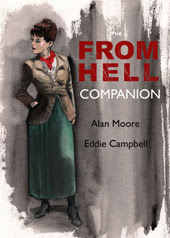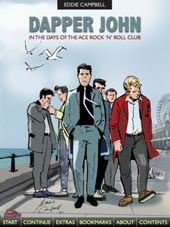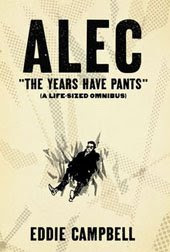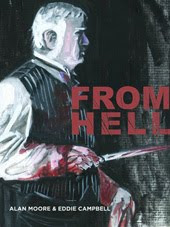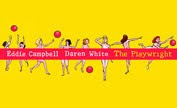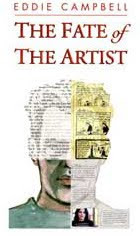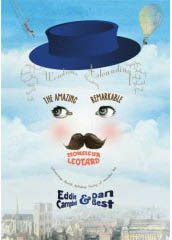 M
My post on Saturday about illustrating the old Sydney murder case has put me in mind of another story. This goes back to when I was doing the sketching at the law court trials for Channel 10 news in Brisbane here. I read on a blog recently that I was doing it bacause I was having difficulty making a living from making comicbooks, which is completely untrue. I did it just for the challenge of doing something I hadn't done before, to get myself out of the house and into the mainstream of human interaction for a few hours. During the time I did it I was only called three more four times in any month, for a total of maybe as many as thirty outings. I've got most of the news items on a video tape which I ought to convert to a cd so I can lift a picture or two instead of having to rely on the one you see at left, which I scanned at the time before sending it to the office and showed on the back cover of an issue of Bacchus. --woman on trial for killing husband. unknown to jury, is doing time for killing other husband--.
I saved the news items as complete stories because I was impressed with the way the reporter, Sharon Marshall, could often construct a story when as far as I could see there wasn't one. It was a dud to my eyes, but by bringing in stuff from elsewhere, doing a brief interview with some relevant authority on the matter at hand, she could place the apparently uneventful trial into the context of a bigger picture and extract meaning from it all. I felt that I learned a great deal from the experience. Telling stories is often just about revealing the connections between things that nobody else noticed.
It was Pete Mullins who got me into it. he was working for channel 7 news, which involved occasional court sketching, and the other channel (10) wanted him too, so he put them in touch with me. I guess we'd talked about it while he was working with me on the comics, which would probably have been down to just a couple of days a week since Pete had so many other irons in the fire by that time. And I would have said, 'hey, i wouldn't mind taking a crack at that some time.' So there I was doing it. There was only one occasion when pete and I found ourselves covering the same trial for the competing channels, -- case of double suicide: guy died, girl failed. now up for possible murder--. Pete and I were both impressed with the sensitive way the court handled the whole thing. And, ever the archivist, I taped both news programs for contrasting and comparing, though I was never enough of an archivist to go to the office and get my sketches back. Pete would occasionally say that it would be much more fun if we got to illustrate the actual crime instead of just drawing the villain sitting on a seat. So I guess I got to draw a murder taking place (see saturday's post) and Pete got to make a damn good animation for Channel 7 news of the 2004 tsunami coming in.
In due course I got to meet a good selection of the major villains in this city. Anne, who went back to working as a legal secretary after I wound down my publishing operation, would occasionally be talking about some scumbag whose parole case came up, and I'd say, oh who's that then? and she'd say, oh nobody you'd know. And she'd give the name, safe in the knowledge that it was about real world, everyday events, and therefore nothing I'd have heard of. And I'd say, oh yes, --last time paroled he abducted pregnant woman, sodomised her--. Anne would look in astonishment. Yeah, i'd continue, he was brought into court in leg irons. Later, during recess, I was in the canteen polishing my sketches to get them up to the office (in all the time I did these gigs I never got to see the outcome of a trial) a priest was berating me about how we had all prejudged the man. Maybe the berating had an effect on me, because I seem to have softened the sketch a little, making the bastard's shaved head look a little like Yul Brynner. On the news that night they happened to have got some footage of him hobbling out in his leg irons, with his bushy monobrow, and my thing looked like I was exhonerating him on paper. I swore after that I'd close out all voices and stick to the job at hand.

I also got to meet a great old character, a barrister named Bill Cuthbert, an old mate of my father-in-law. Jack, Anne's Dad, was 50 years a lawyer, now retired. Bill was sitting there in his wig in the story I illustrated in
After the Snooter --three jail inmates allegedly strangle other inmate with tv cord--that's the old bloke you can see in the picture raising the objection. The next objection to be raised was by one of the other barristers, against ME.
"Your honour, it has come to my attention that there is a 'sketcher' present in court, and he is representing my client as being in a cage"
"But your client IS in a cage, Mr Johnson."
I'd been introduced to Bill once. Upon hearing my voice, as I now stood up to address the whole court and justify my presence before the majesty of madam justice, his honour, all these guys in wigs, three mean looking bastards in a big bulletproof cage, twelve men/women in the box, several armed police guards, a posse of journalists, and a gaggle of relatives and sightseers. The first thing I saw as I swiftly mustered the necessary arrogance for my impromptu self defence was Bill's wicked face grinning from beneath an old scruffy wig that looked like it had been though some process of being smoked, and relishing the spectacle of the next few minutes.
But the outcome of that incident is not within my purview today; the whole anecdote and a couple of other court sketching interludes can be found in
After the Snooter.
We got to drink and yarn a great deal after that. Whenever Jack was in town, with another guy named Doyle (they called each other by surnames: Williams, Cuthbert and Doyle, but I felt I wasn't admitted to that club) we'd get together for beers. There was an occasion, too tangential to get into here, where I was required to do a caricature of Bill, in my courtroom sketching manner, to be presented to him framed. Apparently he was very fond of it and it had pride of place on the wall of his chambers.
When Bill died four years ago, at the church as we entered we were handed the booklet for the words of the service, which was folded and tied with pink legal tape in the traditional manner of a barrister's brief. I didn't notice at first, but in the inside back page there was a full page photocopy of my caricature of Bill.
I'm enough of a well brought up catholic to be immediately horrified at the thought of the words of a church service being illustrated with one of Campbell's caricatures. But not enough to stop a couple of tears.
Labels: court sketching
 Oh, lovely words. A review of Fate of the Artist in case you're still dithering about buying it. The object in the picture, that Monument to Chaos, or brick, still exists. Hayley Campbell found it kicking around under the house among its brother bricks. She brought it in, cleaned it up and put it on top of the bookshelf, where it now resides in the more illustrious company of china ornaments. Now that's art!
Oh, lovely words. A review of Fate of the Artist in case you're still dithering about buying it. The object in the picture, that Monument to Chaos, or brick, still exists. Hayley Campbell found it kicking around under the house among its brother bricks. She brought it in, cleaned it up and put it on top of the bookshelf, where it now resides in the more illustrious company of china ornaments. Now that's art!









